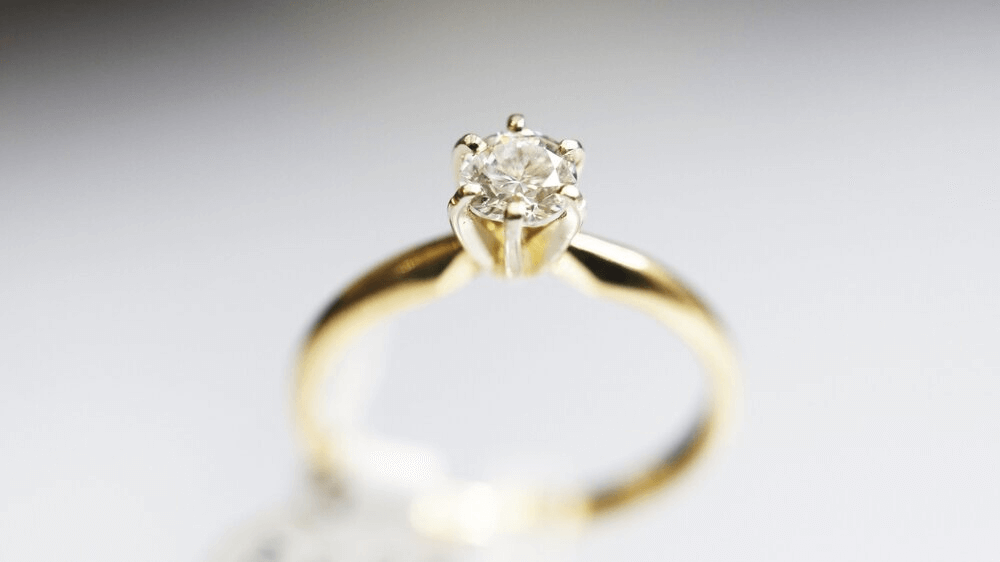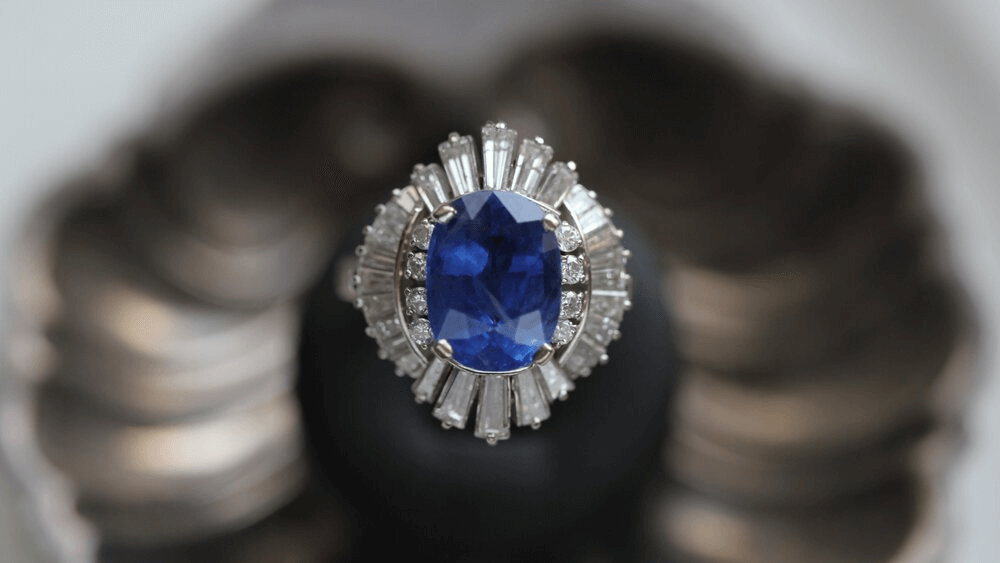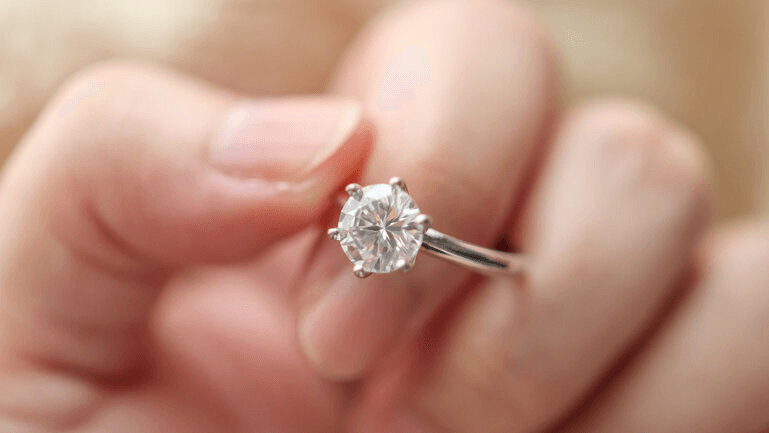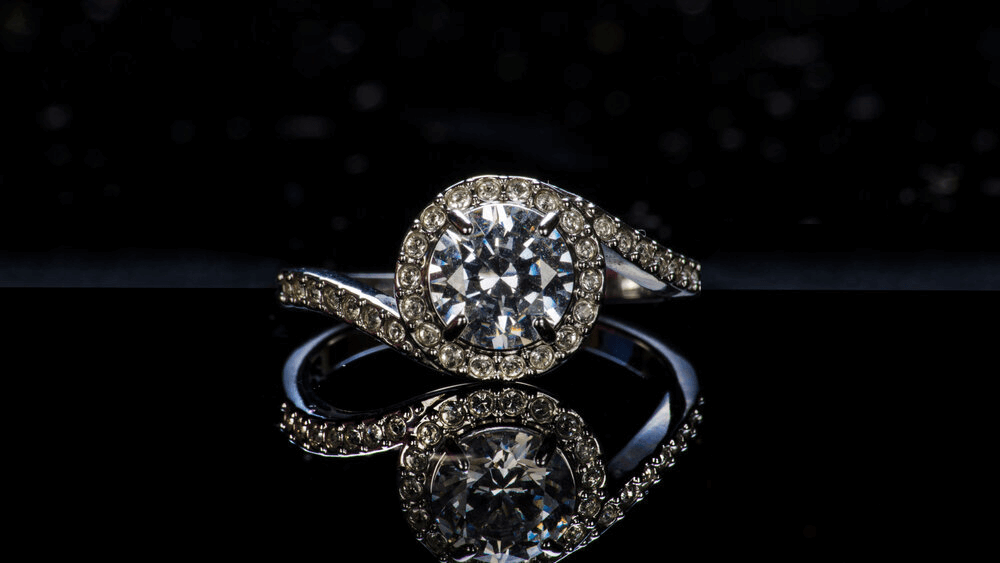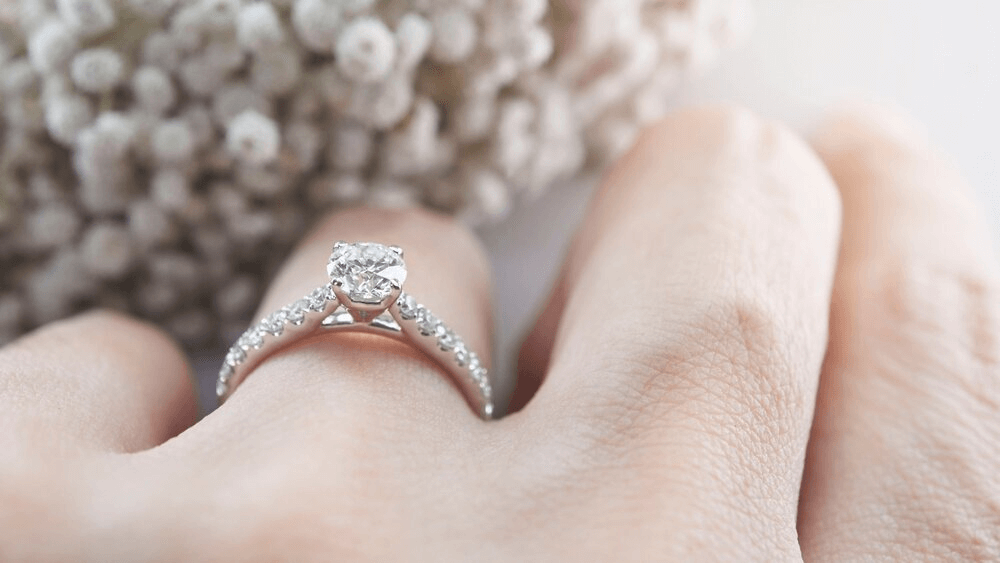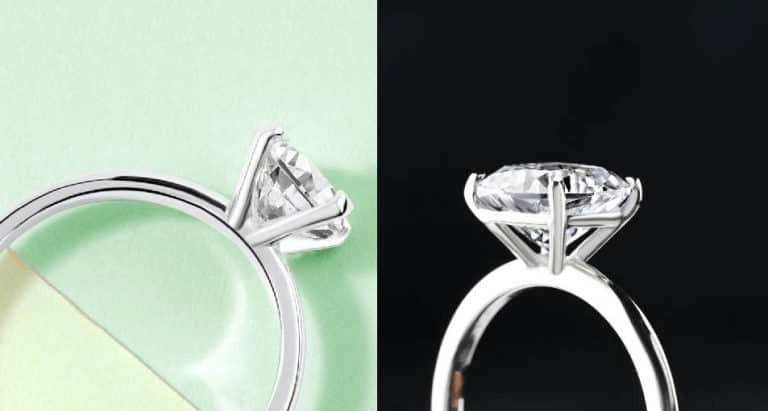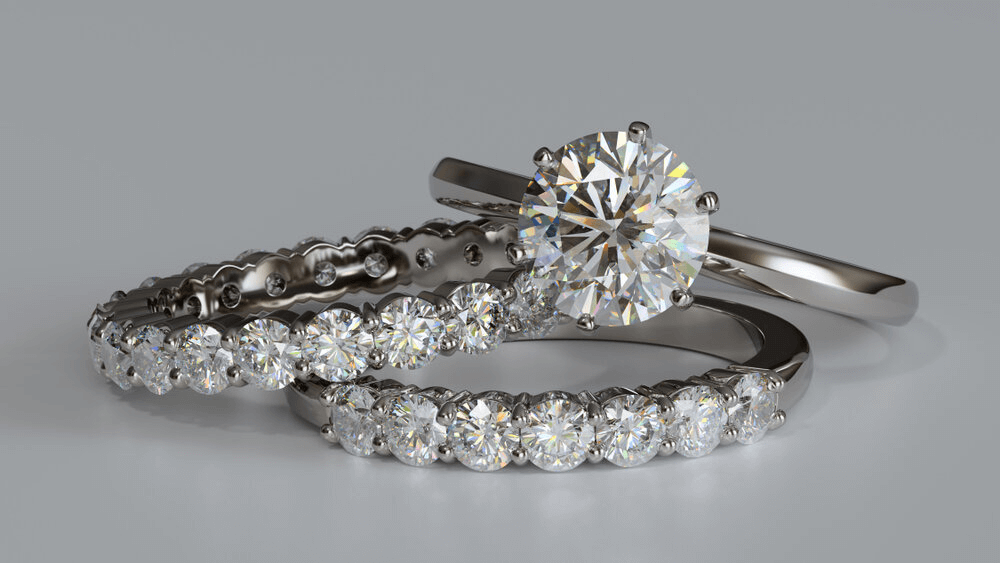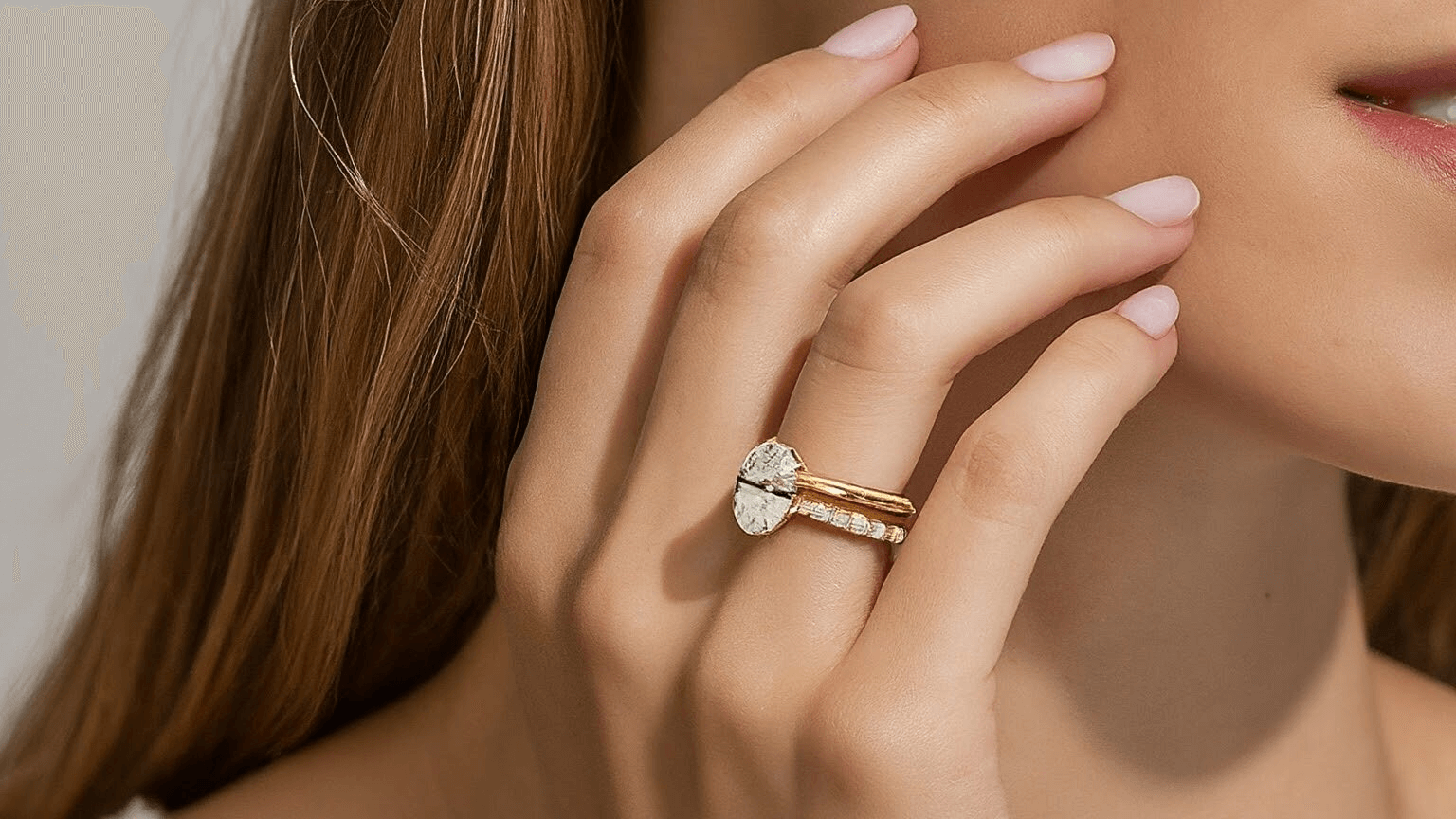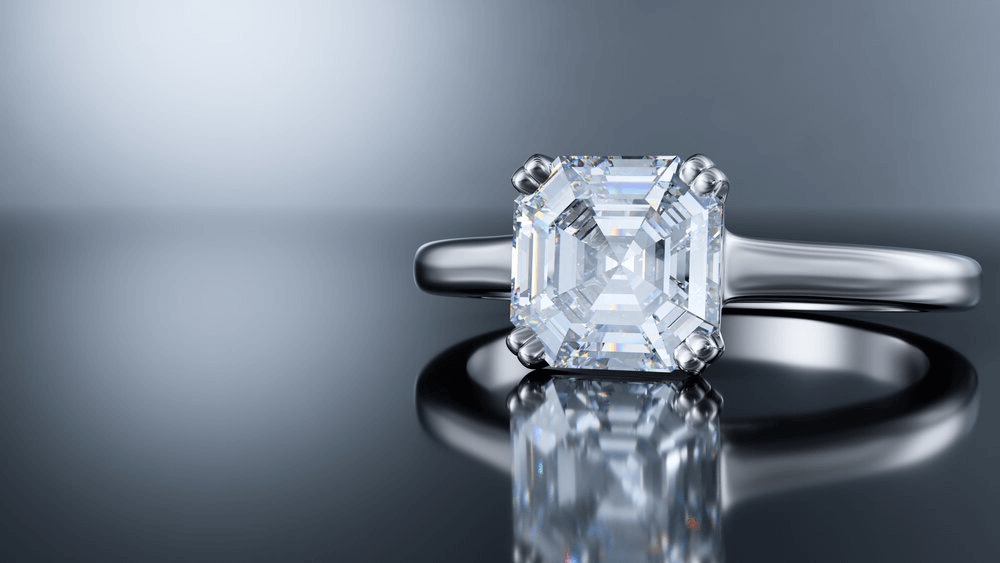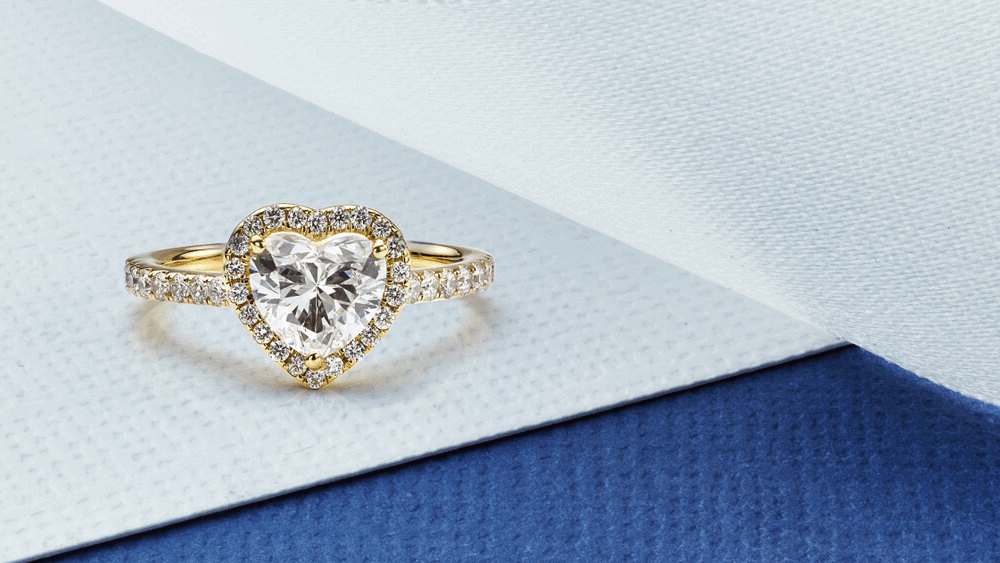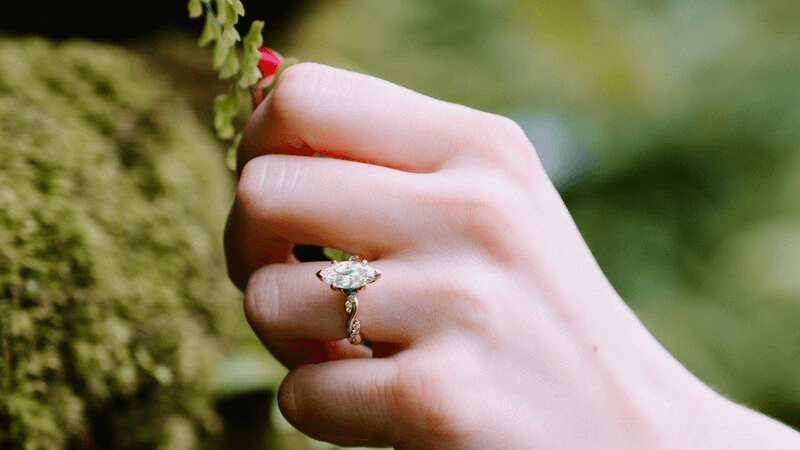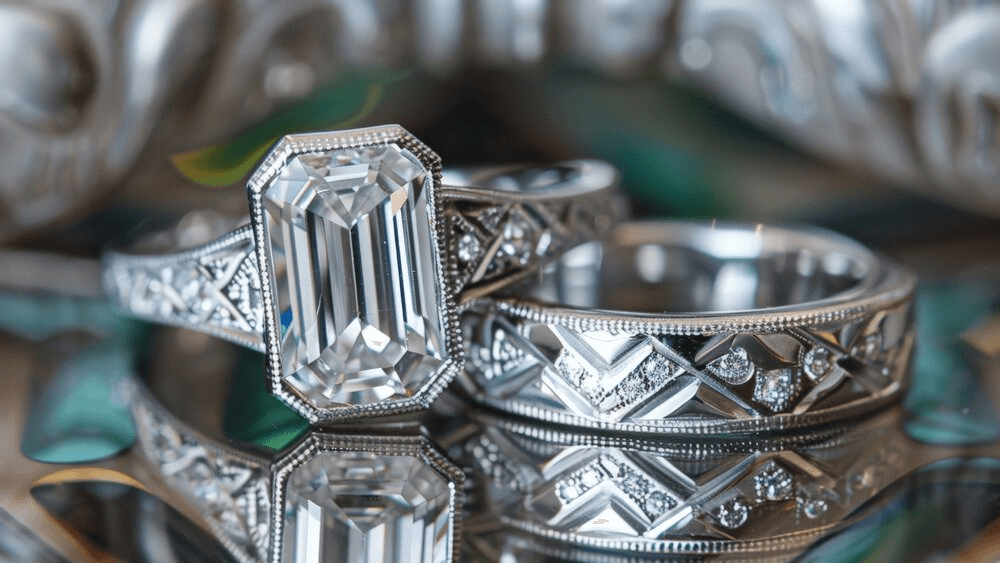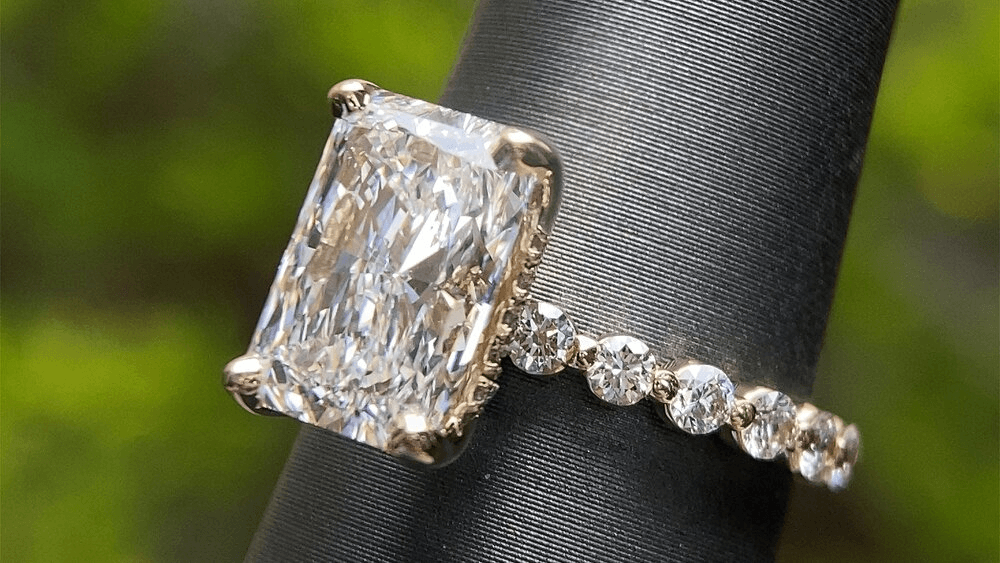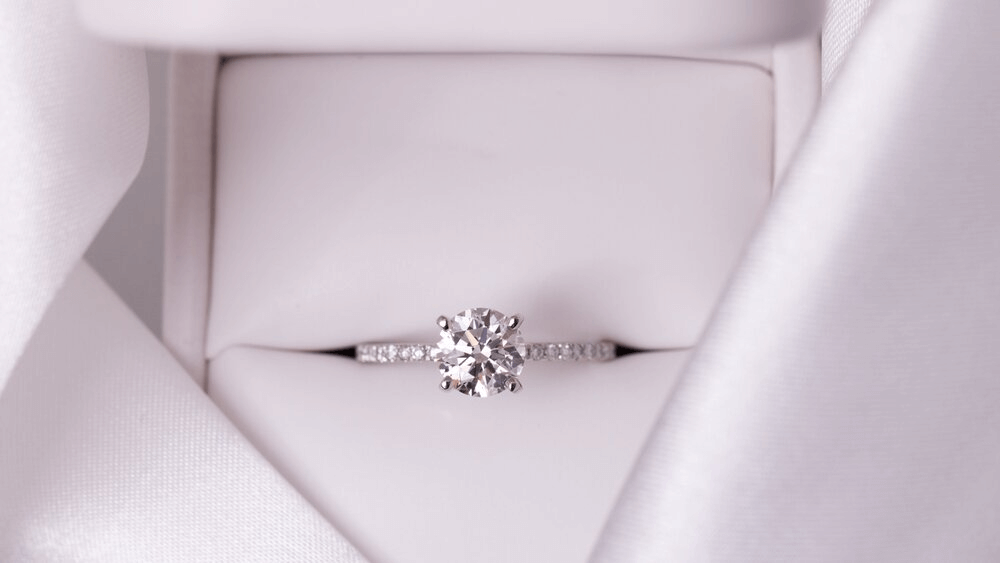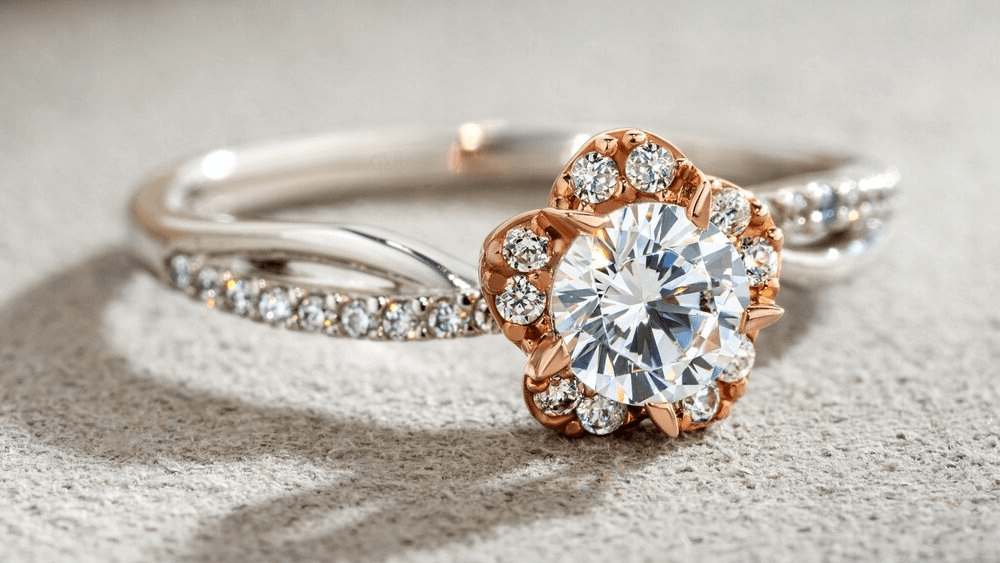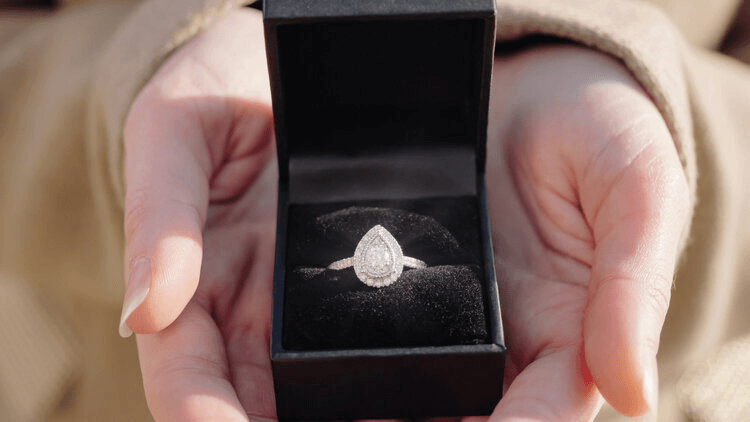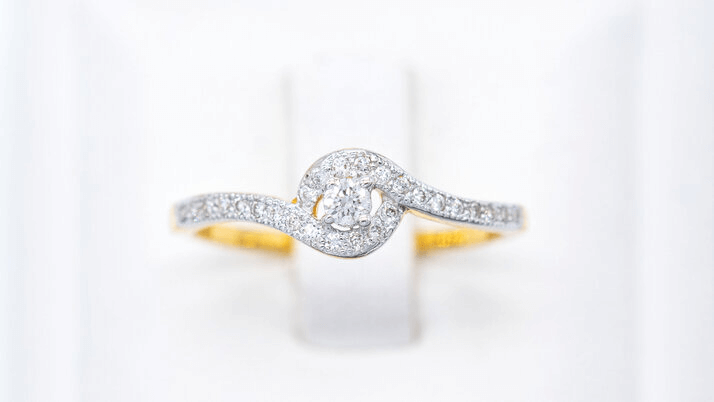Why Everyone’s Choosing Wide Band Engagement Rings

By Gary A.

Edited by Olivia H.
Published Mar 26, 2022
Edited on Mar 31, 2025
Wide band engagement rings offer a bold and modern twist on traditional designs, blending elegance and comfort for those seeking a more substantial look on their finger.

- Wide Band Engagement Rings: 9 Quick Tips
- Introduction to Wide Band Engagement Rings
- Wedding Band Considerations – Which Should Carry More Weight?
- Choosing Thickness for Style and Comfort
- The Downsides to Wide Bands
- Our Expert Take
- 10 FAQs
Before we dive deeper into the specifics, here are some practical tips to help guide your decision-making process:
Wide Band Engagement Rings: 9 Quick Tips
- Tip 1:Balance Between Band Width and Diamond Size: When selecting a wide band engagement ring, it’s crucial to balance the band’s width with the diamond’s size. A wider band can make a smaller diamond appear even smaller, so consider choosing a larger diamond or a diamond with a higher setting to maintain visual harmony.
- Tip 2:Comfort and Fit: Wide bands can feel different on the finger compared to thinner bands. Ensure the ring is comfortable, especially if it’s going to be worn daily. Consider the edges of the band (rounded vs. flat) and how the ring feels between the fingers.
- Tip 3:Metal Choice Matters: The choice of metal for a wide band engagement ring is crucial. Durable metals like platinum or high-quality gold can withstand the daily wear and tear better. Remember, wider bands use more metal, which can affect the ring’s weight and feel on your finger.
- Tip 4:Compatibility with Wide Bands: Not all setting styles are suited for wide bands. For instance, delicate prong settings might look disproportionate on a wide band. Instead, consider robust settings like bezel or channel that complement the band’s width and offer secure diamond placement.
- Tip 5:Setting Height and Ring Profile: With wide bands, the height of the setting becomes more noticeable. A low-profile setting can make the ring easier to wear, while a higher setting can create a dramatic look. Consider your daily activities and choose a setting that won’t hinder your routine.
- Tip 6:Matching Band with Personal Style: Wide band engagement rings make a bold statement. Ensure the ring’s style aligns with your personal aesthetic. Contemporary, classic, or vintage designs can all be adapted to a wide band format, offering a variety of choices.
- Tip 7:Accent Stones and Decorative Elements: Wide bands offer more space for creativity, such as incorporating accent stones, unique textures, or intricate designs. However, be mindful that over-embellishing can overwhelm the central diamond. Aim for a design that enhances, rather than overshadows, the main gemstone.
- Tip 8:Proportional Design Is Key: When examining wide band engagement rings, pay attention to the proportions. The width of the band should harmoniously align with the size and shape of the diamond. A well-proportioned ring will look aesthetically pleasing and feel balanced on the hand.
- Tip 9:Think About Future Pairing with Wedding Bands: Consider how the engagement ring will pair with a future wedding band. A wide band engagement ring might require a specially designed wedding band for a comfortable and visually appealing fit. Consider trying on potential combinations to see how they align together.
Now that you’ve got these practical tips, use Jeweler AI below to find the perfect engagement ring that suits your style and budget:
Introduction to Wide Band Engagement Rings
Wide engagement rings are a staple at any jewelry store. While they may not fit the bill of the ‘traditional’ engagement ring, they offer a lot of benefits that plenty of shoppers will feel drawn to.
Here’s everything you’ll want to know.
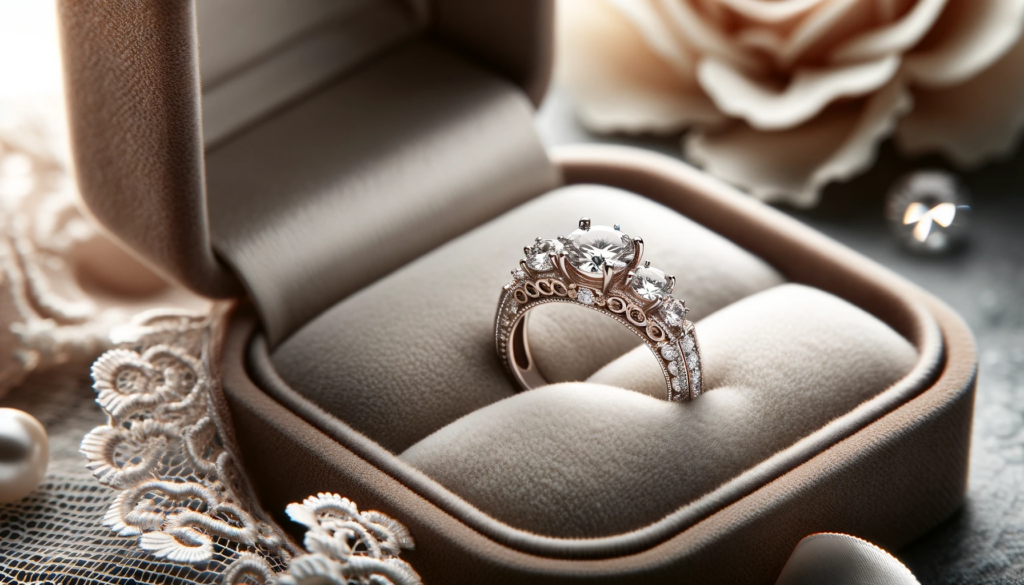
Defining Wide Band Engagement Rings
Generally, we’d say a thick band is anything above 2.5mm in width. It could be a lot more – closer to 5mm.
There’s no universal opinion on what makes a ring band skinny, normal, or wide, and it doesn’t matter which ‘official’ category your ring fits into. One ring could look wide on one finger, but normal on another, so it’s just about what kind of style you’re looking for, and how you describe it to a jeweler.
Wide Band Engagement Rings on the Hand
Skinny band engagement rings are ideal for people with slimmer fingers but, if you’re looking for ring designs to suit larger, wider fingers, then a thicker shank will have a slimming effect. It’ll be a lot more ‘in proportion’ with the rest of the wearer’s finger and hand.
A wider band is, naturally, the more comfortable choice. It stands less of a chance of digging into the soft, fleshy part of the finger (but, obviously, sizing your ring correctly is a major factor here, too).
One of the biggest complaints we’ve heard about skinny band engagement rings is that they can move around a little at the base of the finger – particularly if the wearer has pretty straight fingers to begin with. A thick band covers more of the finger at once, so it’s more likely to stay in one place.
Wedding Band Considerations – Which Should Carry More Weight?
There’s no hard-and-fast rule about this, but, for the most part, couples do prefer to keep the shank of the engagement ring narrower than the wedding band.
This is symbolic, more than anything else, since the wedding band is regarded as the ‘more important’ of the two rings. It also tends to look better and more organized on the finger. The wedding band traditionally sits at the base of the finger, with the engagement ring on top, so stacking them in order of size looks the most cohesive.
Then again, plenty of people have gone against the grain here and chosen a wedding band skinnier than their engagement ring. It’s not a big deal, and it doesn’t negate the meaning of either ring.
One thing to keep in mind, if you are planning on sticking with tradition, is that you could wind up running out of room on the finger. If your engagement ring shank is, say, 4mm, and your wedding band is 5mm, then that’s a lot of skin covered. Plan ahead, and do your research through our blog.
Wide Band Diamond Ring Settings
While the majority of engagement rings feature bands that are only a few millimeters wide, plenty of long-lasting jewelry trends are definitely favoring heavier metalwork. Consider the popularity of Cartier’s Love Ring. While it’s not exactly what engagement ring shoppers are looking for, it goes to show how stylish thicker banded rings can be.
If you’re looking to make the blingiest, most impressive ring possible, then it stands to reason that you’ll want to opt for the biggest canvas possible. A thicker shank gives you more real estate for accents and decorative features. Instead of a single row of pavé, you could go for a double (or even triple) row; instead of a simple three stone ring, you could go for a three stone halo engagement ring.
All of the options available to people looking at regular engagement rings will be available to you – but more.
Choosing Thickness for Style and Comfort
If you’re looking for a wide band option, then we’d suggest you aim for somewhere between 3mm and 6mm for a woman’s engagement ring band.
8mm is a more common size for men’s wedding bands since a lot of women prefer a daintier band, but there are absolutely no rules when it comes to personal preference.
Obviously, 8mm is going to make a pretty big statement, so we wouldn’t recommend it for an engagement ring unless you’re sure the ring’s intended wearer will definitely appreciate it. If you’re not so sure, stick to the 3mm – 6mm range, just to be safe.
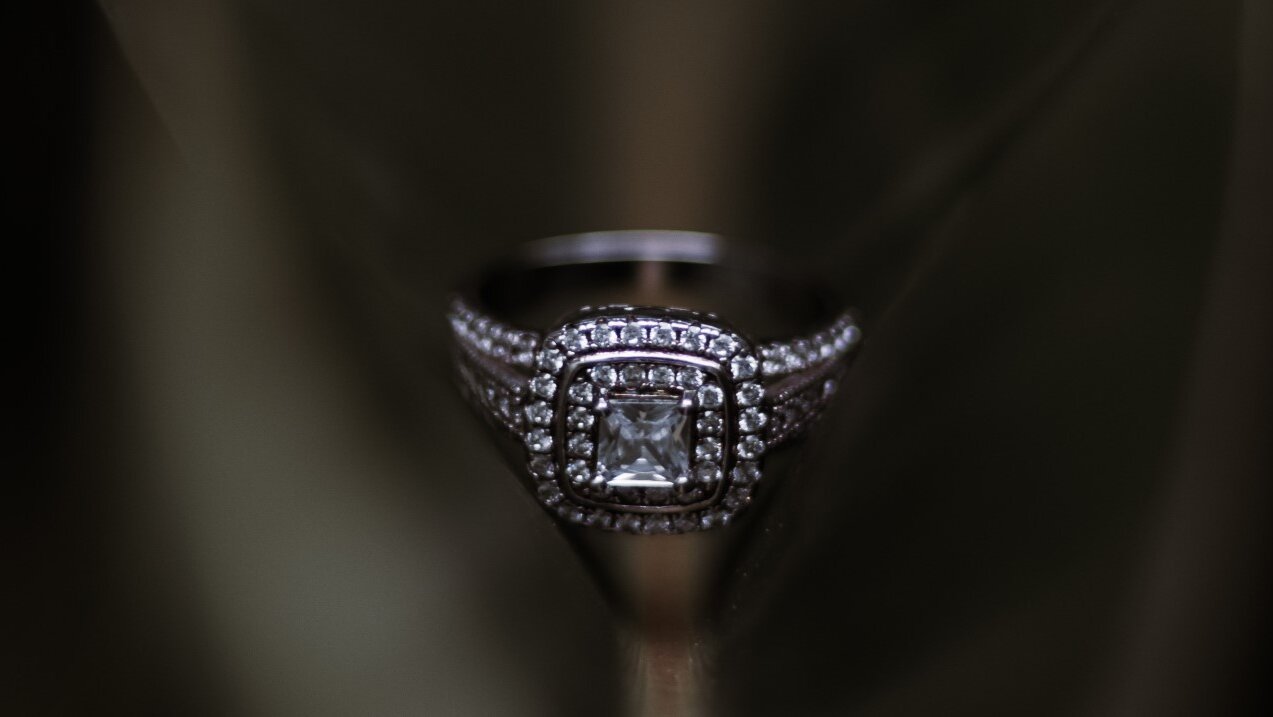
The Downsides to Wide Bands
Any design choice you make will have its downsides – even if you opt for the simplest solitaire design possible. Here’s what to consider for a wider shank:
- A higher cost
The cost of any engagement ring is determined by a lot more than just the size of the shank, but a larger shank does mean that, at the very least, you’re going to have to invest more into the setting.
If you’re looking at a pavé or channel setting, or any decorative filigree or milgrain, then covering a wider shank will also take a higher investment. The difference may be relatively minor, but, if you’re on a tight budget, it’s important to consider this beforehand. - Less space
As we talked about earlier on, a thicker band inevitably requires more real estate on the wearer’s finger, which means there’s less space for the wedding band and, eventually, an eternity ring. There are ways to work around this (for instance, giving up on the tradition that says wedding bands have to be the larger piece in the collection), but the solutions aren’t for everyone. - Can make a diamond look smaller
This one all comes down to perspective. If you hold a one carat diamond against a 0.2 carat diamond, it’s going to look pretty big; if you hold it against a 5 carat diamond, on the other hand, then it’s going to look like a pretty modest stone.
The same goes for your ring design. A floating diamond, or one held in place by four prongs instead of eight or ten, is going to appear bigger than one that’s swamped in metalwork.
Similarly, a diamond with a diameter of 6mm is going to look a lot more impressive against a shank with a width of 2mm than it is against a shank of 6mm.
It’s not always as cut-and-dry as this. A higher setting can be the solution or something like a halo, but it is something to keep in mind. - Not as ‘dainty’ as a regular or skinny band
Bulkier rings are great, but they’re not for everyone. A thicker band can lack the same elegance and svelte appearance that other ring designs achieve, which will mean that they don’t appeal to everyone.
In this instance, it’s all about knowing your partner – what they like, how they dress, and whether or not they are hoping for a ring that breaks from tradition, and makes a bolder statement on their finger. - Can be less comfortable
Yes – even though we put ‘comfort’ in the plus column, the feel of a wide engagement ring on your finger can also be a negative. Our skin needs to breathe, and, for some people, a particularly wide band can get uncomfortable throughout the course of the day.
If this is the case, it could just be that you’ll want to lose one or two millimeters. You don’t necessarily need to drop right down to the minimum shank width but find a comfortable middle ground between the two extremes.
Our Expert Take
There is no right or wrong. You want the ring to be comfortable to wear, flattering on the finger, and to look great. Most importantly, you want it to be perfectly suited to the wearer, which means there is no universal ‘right’ or ‘wrong’ here.
Wide engagement rings are not for everybody. In terms of beauty and comfort, it’s a case of approval being in the eye of the beholder (or, in this case, the wearer).
Then again, a lot of people love wider engagement rings. They’re bold, blingy, and very flattering.
For you, this means doing your own research into your partner. Take a look at their existing jewelry collection, find a way to tactfully broach the subject, and figure out for yourself whether it’s the right call or not.
10 FAQs
- Q: Can a wide band engagement ring accommodate any diamond size?
- A: While wide bands can support various diamond sizes, it’s important to choose a diamond that looks proportional to the band’s width. Larger diamonds or unique settings are often more suited to wide bands.
- Q: Are wide band engagement rings more comfortable than thinner bands?
- A: Comfort depends on personal preference. Some find wide bands more comfortable as they distribute pressure more evenly, while others prefer the light feel of thinner bands.
- Q: How does a wide band impact the overall look of the ring?
- A: A wide band creates a bold and substantial look. It draws more attention to the metalwork and can be used to showcase intricate designs or additional diamonds.
- Q: Is resizing a wide band engagement ring more challenging?
- A: Yes, resizing wide bands can be more complex due to their design and the amount of metal involved. It’s important to get an accurate size before purchasing.
- Q: Can wide band rings be paired with any wedding band?
- A: Wide band engagement rings might require specific types of wedding bands for a comfortable and cohesive look. It’s advisable to consider the future wedding band when selecting your engagement ring.
- Q: Do wide band rings require more maintenance?
- A: Maintenance requirements depend more on the metal and setting type rather than the band’s width. However, intricate designs on wide bands might need more frequent cleaning.
- Q: Are wide band engagement rings more expensive?
- A: Generally, wide bands use more metal, which can increase the cost. The price also depends on the chosen metal, diamond size, and any additional design elements.
- Q: How do I choose the right metal for a wide band engagement ring?
- A: Opt for durable metals like platinum or high-quality gold. The wider the band, the more important the metal’s strength and durability become.
- Q: What setting styles work best with wide bands?
- A: Bezel, channel, and flush settings work well with wide bands, offering both style and security for the stone. Delicate settings like prongs might look disproportionate on a wide band.
- Q: Can wide band engagement rings accommodate side stones or accents?
- A: Absolutely. Wide bands offer more space for creative designs, including side stones, diamond accents, and unique textures or engravings.
Discover the elite world of Type IIa diamonds with Jeweler AI – your guide to the most exquisite and rare gems. Explore our AI-powered selection process for the perfect engagement ring.
FOLLOW-UP GUIDE SERIES





